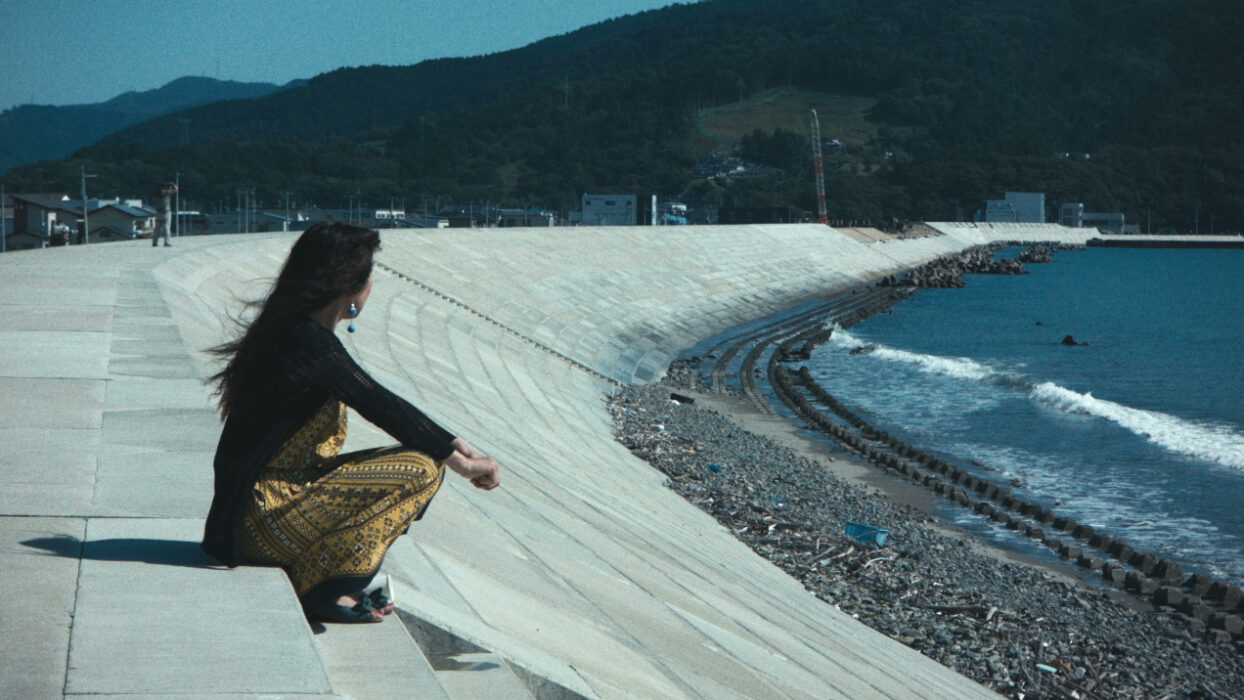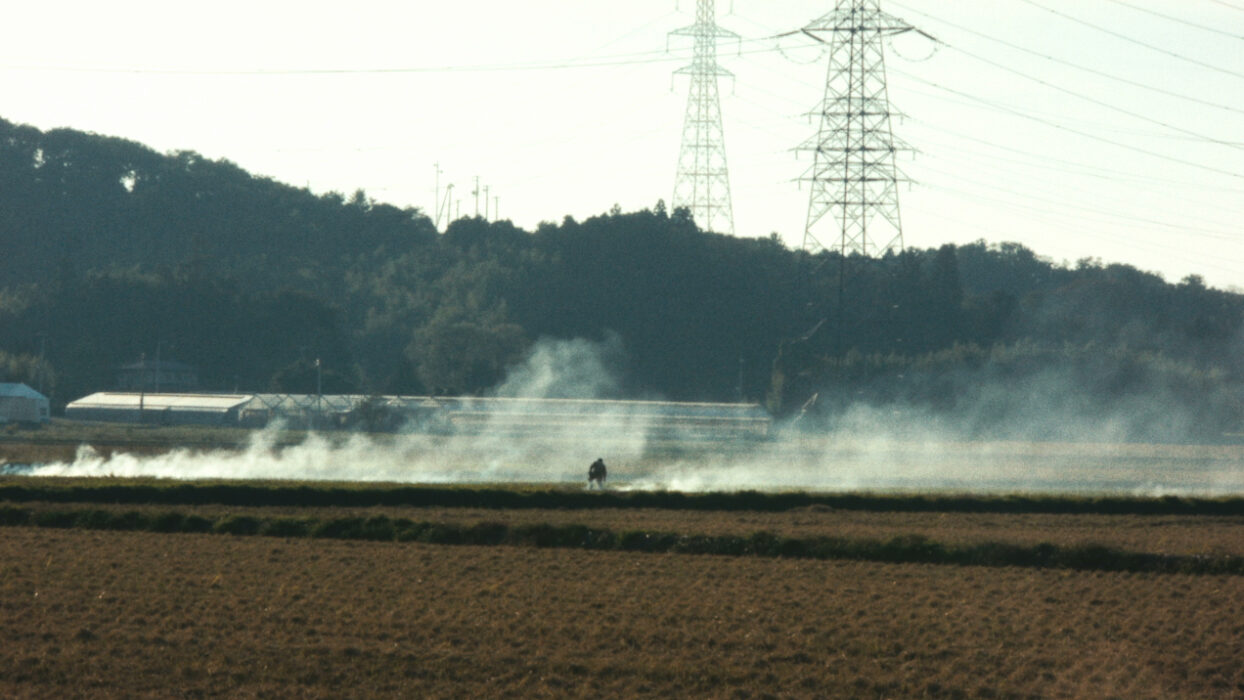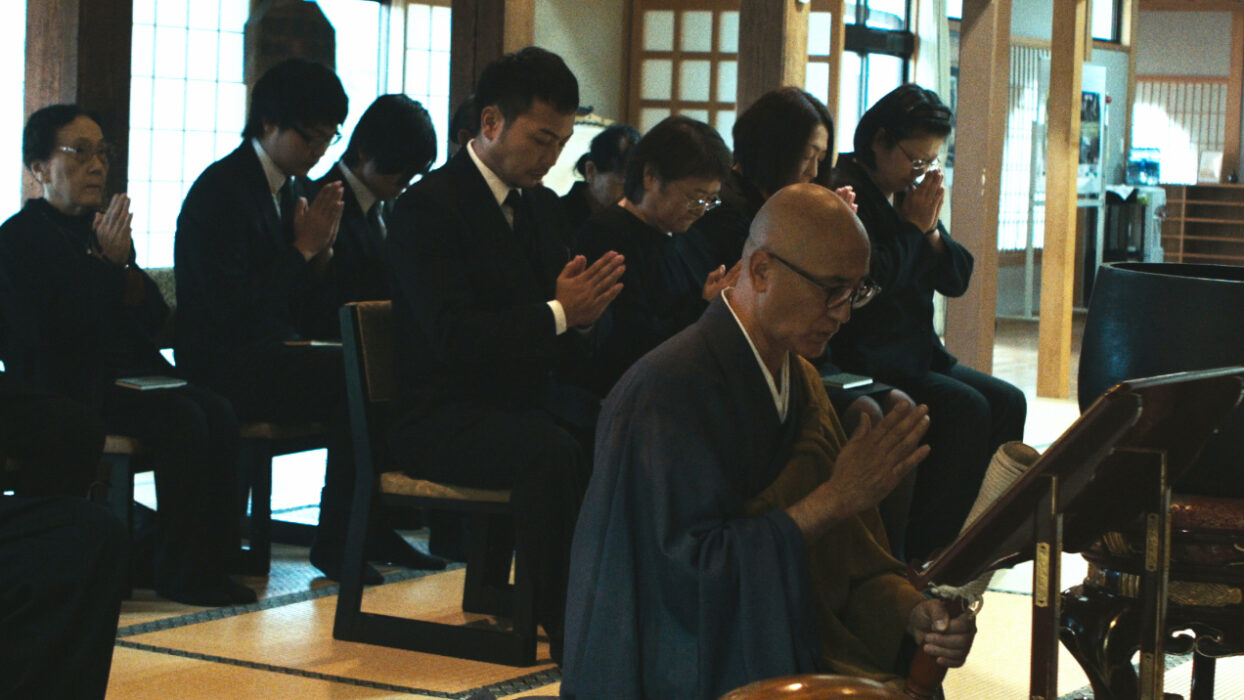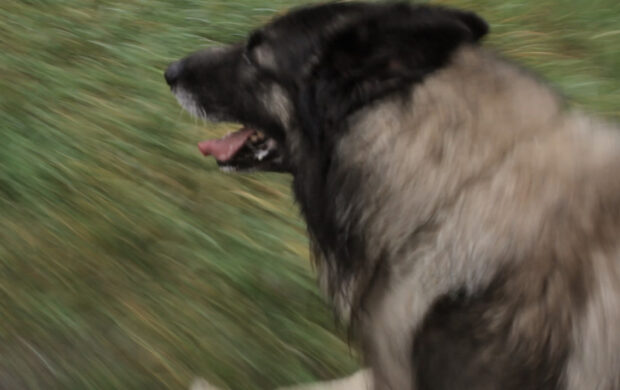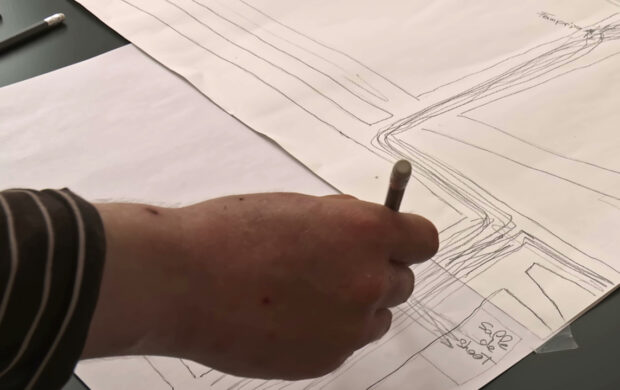Brise-lames
Rising From the Tsunami
- 2019
- France
- 68 minutes
- Japanese
From a strange luminous forest, a man recounts that a young local woman is regularly visited by the dead who were swept away by the tsunami that devasted the bay some years ago. On the images of trees accompanying his story, small translucid jelly fish are superimposed. Ghosts and deep waters have invaded the territory. Crossing an emaciated beach that seems to be covered by an enormous tarpaulin, like a cadaver that needs taking away, the filmmakers gather eye-witness accounts. When the tsunami engulfed the place, it opened a breach through which the afterlife has now seeped. Survivors say that wandering souls walk over a bridge in town, and that some people have seen them. The tsunami victims, so they say, are the thwarted dead, their departure has been delayed. These dead are in suspension, which is also perhaps the fate of the living, waiting in this desolate area where nothing remains. The survivors navigate through the makeshift towns erected after the catastrophe and the towns being rebuilt. One foot in the past, the other in the future, they come together, bear witness and pray to find peace, while, on the coast, breakwaters, huge concrete dykes to hold back the next waves, are being constructed. These breakwaters against the Pacific disfigure the landscape, and the memory they embody mingles with an ominous waiting. Colossal walls cutting off access to the sea, where some still scatter the ashes of their dead, while others continue to look for the missing. The breakwaters do not reject the dead and everyone has to live together in this suspended time.
Clémence Arrivé
- Production : Elsa Minisini (Baldanders Films), Elisabeth Pawlowski (Baldanders Films), Jean-Baptiste Fribourg (La Société des Apaches)
- Photography : Hélène Robert
- Sound : Jeremy Perrin
- Editing : Laurent Leveneur
- Music : ÈLG
- Print contact : La Société des Apaches (Jean-Baptiste Fribourg) admin@lasocietedesapaches.com

